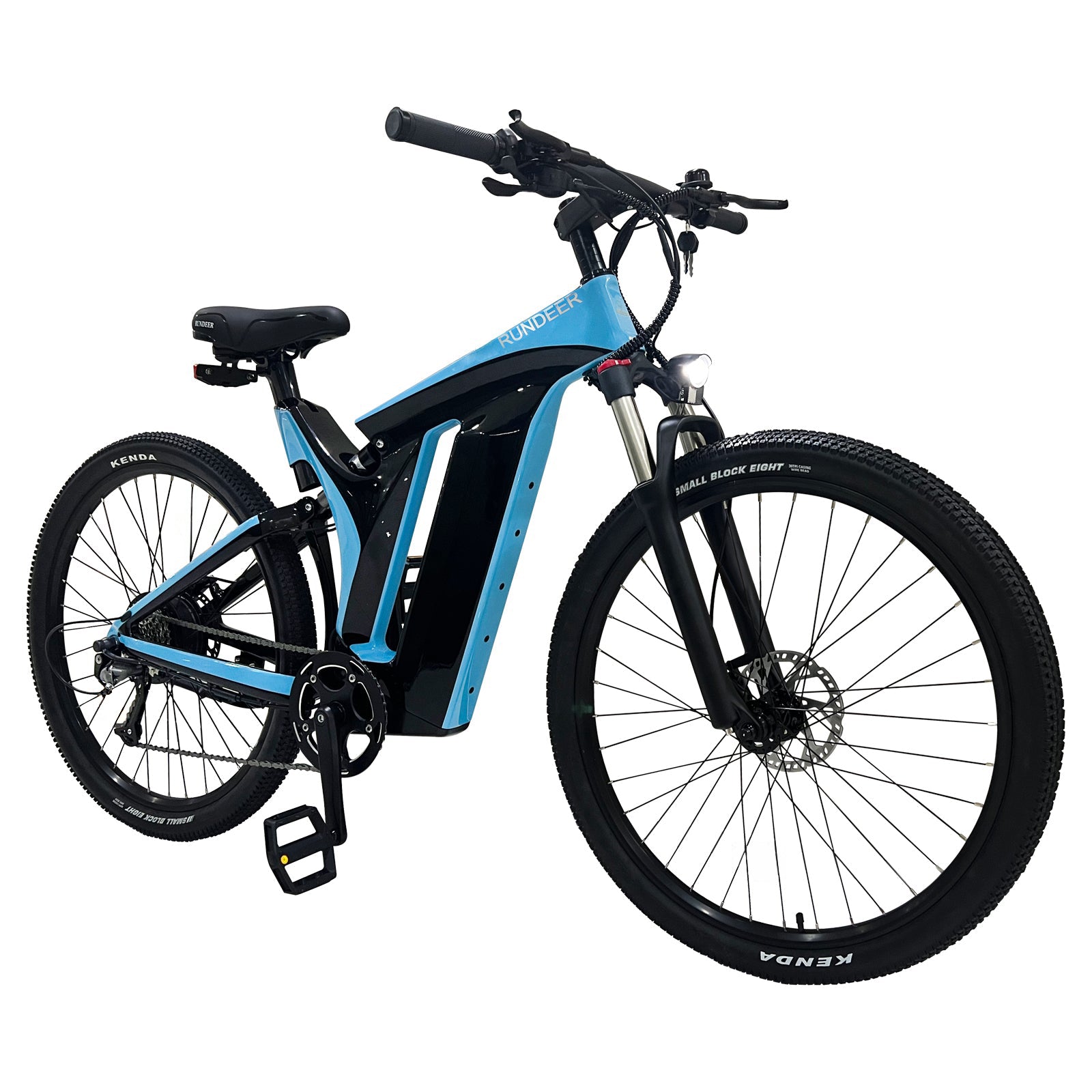Riding an e-bike brings speed, convenience, and excitement, making it a great option for both commuting and adventure. But like any form of transportation, safety should always be a priority. Whether you're cruising on a Rundeer e-bike or exploring trails, these safety tips will help you stay secure and enjoy your ride.
Cycling is an exhilarating and eco-friendly way to commute, stay fit, and explore the outdoors. But with any adventure, safety is paramount. Riding an e-bike or a traditional bike requires awareness, preparation, and understanding of road conditions to stay safe. In this blog, we’ll cover key safety practices that will help make your cycling experience both enjoyable and secure.
1. Wear the Right Gear
- Helmet: Always wear a helmet. It’s your first line of defense in case of a fall or collision. Make sure it fits snugly and meets safety standards.
- Reflective Clothing: Bright, reflective gear helps increase your visibility, especially at night or in low-light conditions. Reflective vests, jackets, or even bike-mounted lights are helpful.
- Protective Gear: For rougher terrain or high-speed e-biking, consider additional protective equipment like knee and elbow pads.
2. Follow Traffic Rules
- Stay in Designated Bike Lanes: Whenever possible, stick to bike lanes or paths. These routes are designed to separate you from vehicle traffic and provide a safer space for cycling.
- Obey Traffic Signs and Signals: Cyclists are considered vehicles on the road, so you’re expected to obey all traffic signals and signs, just like drivers.
- Use Hand Signals: Clearly signal when turning or stopping. This helps drivers and pedestrians understand your movements and reduces the likelihood of collisions.
3. Keep Your Bike in Top Condition
- Regular Maintenance: Check your brakes, tires, chain, and gears regularly to make sure everything is functioning properly. A well-maintained bike is less likely to malfunction and cause accidents.
- Battery Check: If you’re riding an e-bike, make sure your battery is charged and securely fastened. Battery failure mid-ride can lead to unexpected stops or slower reaction times.
- Check Tire Pressure: Low tire pressure can affect your bike’s handling, especially on turns. Properly inflated tires ensure smoother and safer rides.
4. Be Aware of Surroundings
- Look Ahead: Constantly scan the road for obstacles like potholes, debris, or other vehicles. Keeping an eye out helps you avoid sudden maneuvers.
- Avoid Distractions: Refrain from using your phone, listening to music through headphones, or engaging in other activities that could distract you from the road.
- Ride Defensively: Assume drivers may not see you, especially at intersections or when merging. Be cautious and prepared to stop or swerve if necessary.
5. Use Lights for Night Riding
- Front and Rear Lights: When riding at night, make sure to use both front and rear lights. This increases your visibility and helps other road users see you.
- Extra Illumination: Some e-bikes, like Rundeer's Attack10, come with bright LED headlights designed for night riding. These lights not only illuminate your path but also alert others to your presence.
6. Know and Respect Your Limits
- Stay Within Comfortable Speed: E-bikes can reach higher speeds than regular bikes, which can be thrilling but risky. Avoid going too fast, especially on unfamiliar or crowded roads.
- Choose Routes Based on Your Skill Level: If you’re new to cycling or haven’t ridden in a while, start with easier routes and gradually work your way up to more challenging terrains.
7. Prepare for Weather Conditions
- Check the Forecast: Avoid cycling in extreme weather conditions like heavy rain, snow, or strong winds, as these increase the risk of accidents.
- Wear Weather-Appropriate Clothing: If you’re caught in a drizzle or colder weather, having the right gear like a rain jacket or gloves will help you stay safe and comfortable.
- Be Cautious on Wet Surfaces: Wet roads can be slippery. Take extra care with turns and braking, as your bike’s traction may be reduced.
8. Practice Safe Passing and Distance
- Keep a Safe Distance: Avoid riding too close to other cyclists, pedestrians, or vehicles. Keeping a safe distance allows you more time to react if they make sudden movements.
- Pass Safely: When passing others, do so on the left and make sure to give enough space. Signal your intention to pass with a bell or verbal cue like “On your left” to avoid startling others.
9. Know Emergency Procedures
- Plan Your Route with Landmarks: Know your route in advance and make note of any landmarks or spots where you can seek help if needed.
- Carry a Basic First Aid Kit: It’s a good idea to bring along a small first aid kit, especially on longer rides. A few bandages, antiseptic wipes, and gauze can come in handy.
- Have Emergency Contacts Handy: Make sure you have emergency contacts easily accessible in case of an accident.
10. Practice Patience and Stay Calm
- Stay Patient with Others on the Road: Road sharing requires mutual respect between cyclists, drivers, and pedestrians. Be patient, signal clearly, and avoid aggressive riding.
- Stay Calm in Difficult Situations: If you encounter an aggressive driver or a frustrating situation, remain calm. Your primary goal is to get home safely.
Final Thoughts
E-bikes bring a new level of freedom and fun to cycling, and by following these tips, you can enjoy a safe, worry-free ride. Rundeer e-bikes, with their robust design and powerful features, are perfect for both urban commuting and off-road adventures. Remember, whether you’re riding for fun or function, safety is always the ultimate priority.
Ride safe, and enjoy the journey with Rundeer!













